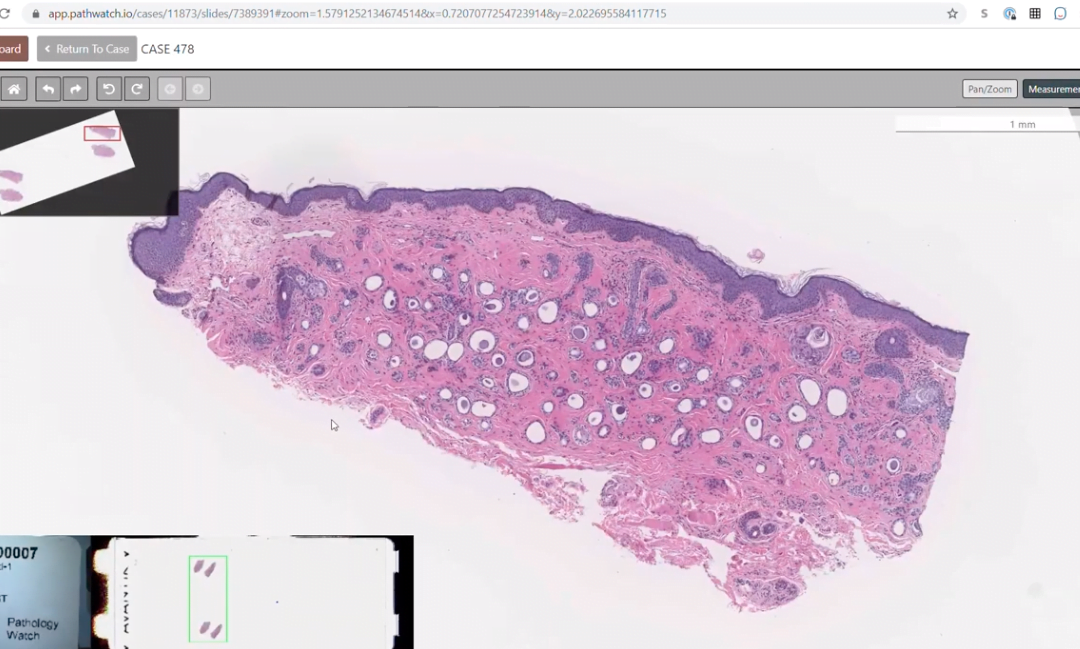Images shown are not intended to be used for the diagnosis or treatment of a disease or condition.
If you happen across a small cluster of brown, yellow, or pink bumps (or papules), around the eyes or on the neck, it may be a case of syringomas. In this episode of Digital Dermatopathology Digest, Rajni Mandal, MD, clinical research associate in dermatopathology for PathologyWatch, briefly discusses the distinct characteristics of this benign growth of the sweat gland.
According to Rajni, syringomas are common in the periorbital and genital regions. Growths can be associated with Down’s syndrome, and disseminated, solitary, or eruptive types sometimes indicate Nicolau-Balus syndrome.
“Note that the eccrine ducts have an eccentric lumen and can have a tadpole shape,” says Rajni, referring to a common variant of syringomas. “And a clear cell syringoma is often associated with diabetes.”
Another type of syringomas, a mixed tumor called chondroid syringoma, is common in elderly males and appears on the head and neck. It’s characterized by a circumscribed dermal tumor, and it also appears as an apocrine/eccrine proliferation in fibrous, myxoid, or chondroid stroma.
“Women, especially of Japanese heritage, are affected more than men,” explains the American Osteopathic College of Dermatology. “Syringomas tend to first erupt in adolescence, but could start at any age.” The AOCD adds that young people may be predisposed to “eruptive syringomas,” wherein the growths occur suddenly.
Whether you’re in residency, studying for board exams, or a practicing dermatologist looking to stay sharp, the Digital Dermatopathology Digest video series is your informational and convenient source for dermatopathology review. Find the full series here.

